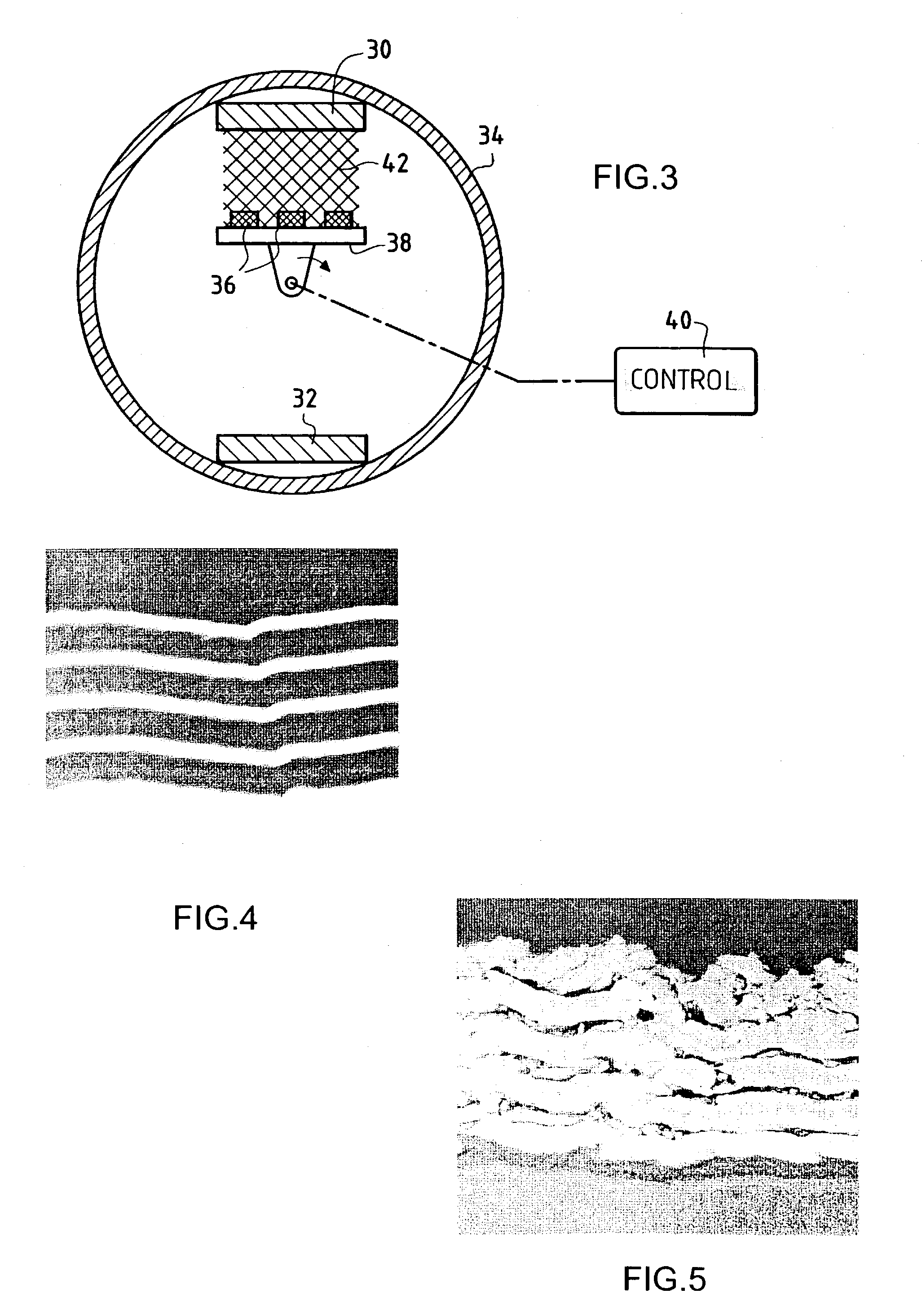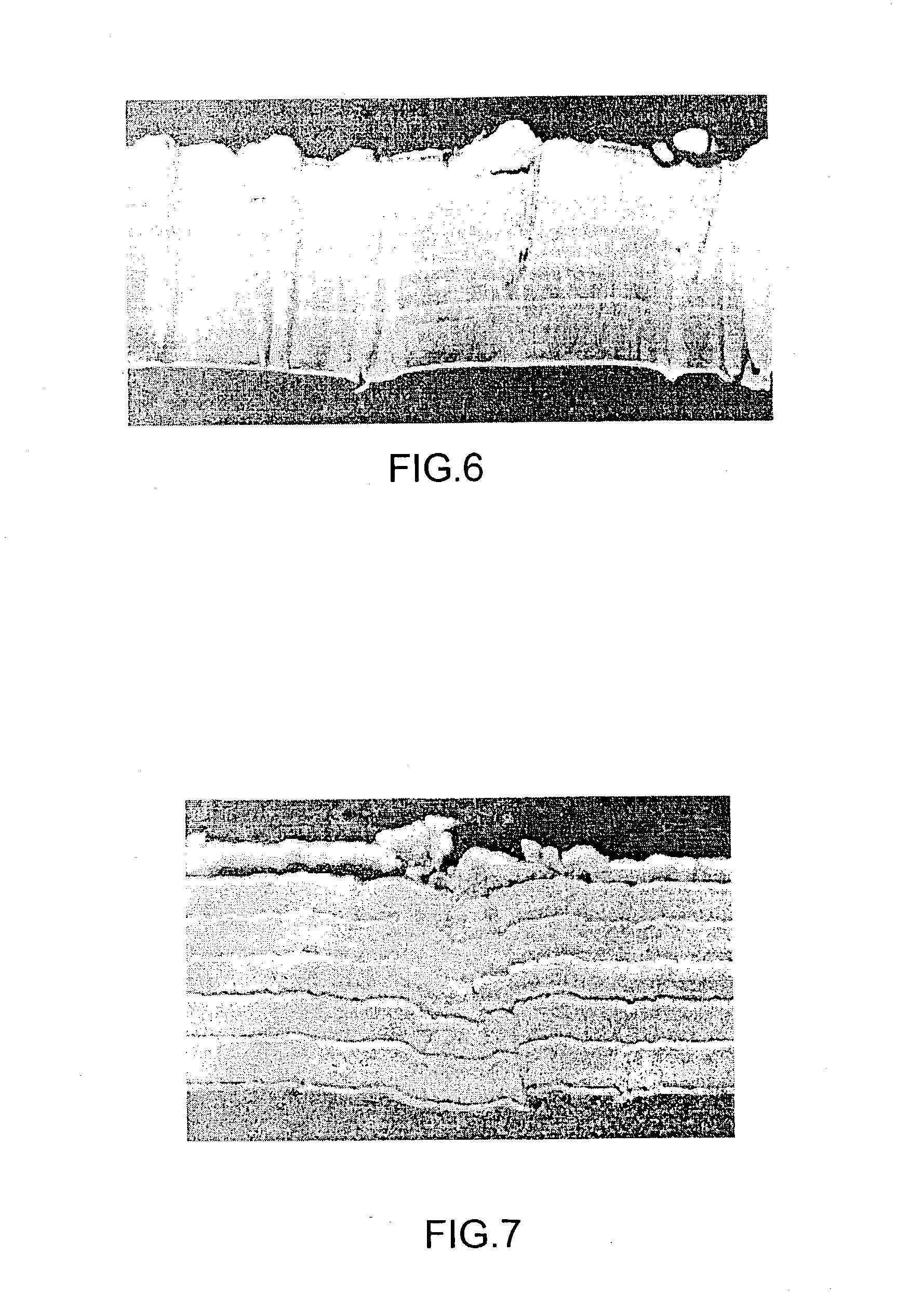Method of making a protective coating forming a thermal barrier with a bonding underlayer on a superalloy substrate, and a part obtained thereby
a technology of superalloy and thermal barrier, which is applied in the direction of chemical vapor deposition coating, machine/engine, record information storage, etc., can solve the problems of easy weight penalty and difficult control of the precise composition of the bonding underlayer, and achieve the effect of small thickness
- Summary
- Abstract
- Description
- Claims
- Application Information
AI Technical Summary
Benefits of technology
Problems solved by technology
Method used
Image
Examples
example 1
[0075] A nickel-based superalloy metal substrate for a high pressure turbine blade of a turbojet engine was provided with a bonding underlayer made of an intermetallic compound, as follows:
[0076] Five individual layers of platinum each having a thickness of about 500 nm were deposited in alternation with four individual layers of aluminum each having a thickness of about 1330 nm. The individual layers were formed by cathode sputtering under the conditions described with reference to FIG. 3.
[0077] FIG. 4 shows the individual platinum layers (pale color) and the individual aluminum layers (dark color) as obtained after deposition.
[0078] Heat treatment was then performed in an inert atmosphere (argon) at a temperature of 700.degree. C. for a period of 2 h. A bonding underlayer having a total thickness equal to about 7.8 .mu.m was obtained and it comprised an intermetallic compound of the PtAl.sub.2 type.
[0079] FIG. 5 is a section through the structure of the bonding underlayer. It can ...
example 2 (
FOR COMPARISON)
[0082] A bonding underlayer having substantially the same total thickness and the same composition as that of Example 1 was formed on a substrate of the same kind as that used in Example 1 and under analogous conditions, except that it was made by depositing three individual layers of platinum each having a thickness of 833 nm in alternation with two individual layers of aluminum each having a thickness of 2650 nm. Adhesion testing performed under the same conditions as in Example 1 revealed poor adhesion to the substrate. In addition, the outer surface of the underlayer presented defects (depressions) revealing localized melting of the aluminum.
example 3
[0083] A nickel-based superalloy metal substrate for a high pressure turbine blade of a turbojet engine was provided with an intermetallic thermal barrier underlayer as follows:
[0084] Two individual layers of platinum each having a thickness equal to about 1150 nm were deposited on the substrate together with an intermediate layer of aluminum having a thickness of about 1400 nm. The layers were formed by cathode sputtering.
[0085] Heat treatment was then performed in an inert atmosphere (argon) at 700.degree. C. for a period of 2 h. The platinum and aluminum layers then reacted exothermally to form an intermetallic compound Pt.sub.5Al.sub.3. The underlayer having a total thickness of about 3.7 .mu.m retained a laminated structure.
[0086] Analysis performed as in Example 1 showed that the underlayer was made up only of the elements supplied (aluminum and platinum) and did not include any traces of elements from the substrate.
PUM
| Property | Measurement | Unit |
|---|---|---|
| temperature | aaaaa | aaaaa |
| temperature | aaaaa | aaaaa |
| temperature | aaaaa | aaaaa |
Abstract
Description
Claims
Application Information
 Login to View More
Login to View More - R&D
- Intellectual Property
- Life Sciences
- Materials
- Tech Scout
- Unparalleled Data Quality
- Higher Quality Content
- 60% Fewer Hallucinations
Browse by: Latest US Patents, China's latest patents, Technical Efficacy Thesaurus, Application Domain, Technology Topic, Popular Technical Reports.
© 2025 PatSnap. All rights reserved.Legal|Privacy policy|Modern Slavery Act Transparency Statement|Sitemap|About US| Contact US: help@patsnap.com



